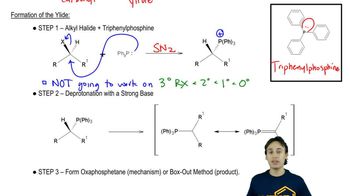What two sets of reagents (each consisting of a carbonyl compound and phosphonium ylide) can be used for the synthesis of the following alkene?
1.
 Verified step by step guidance
Verified step by step guidance Verified video answer for a similar problem:
Verified video answer for a similar problem:



 15:39m
15:39mMaster Box-Out Method and Full-Mechanism with a bite sized video explanation from Johnny
Start learning